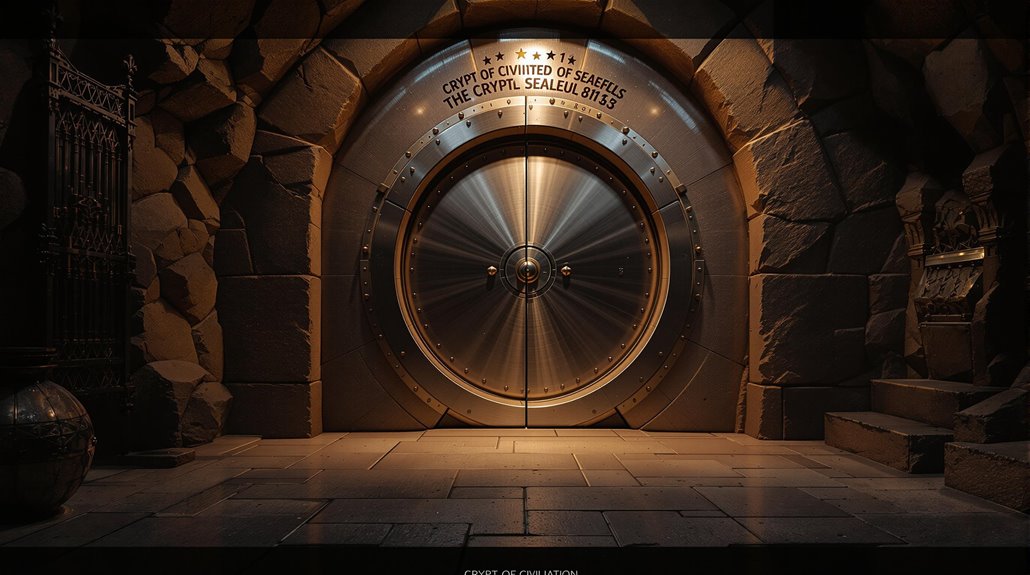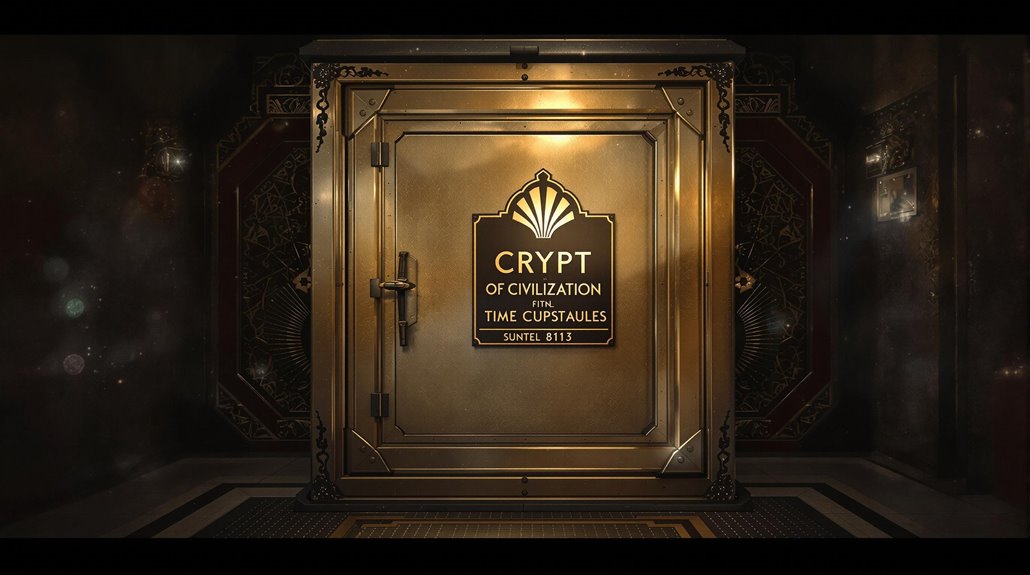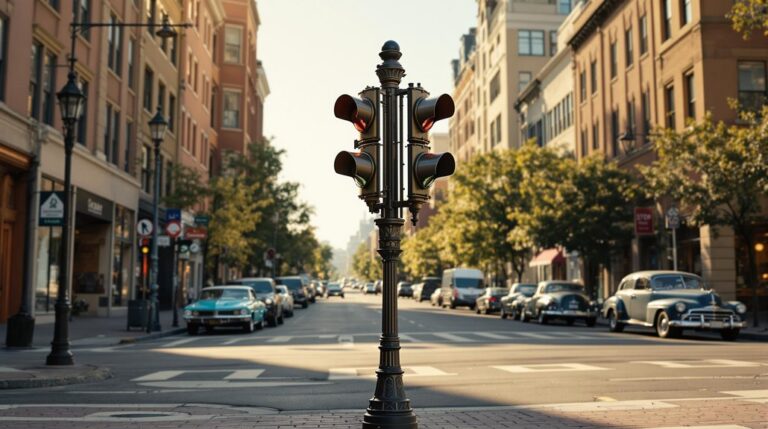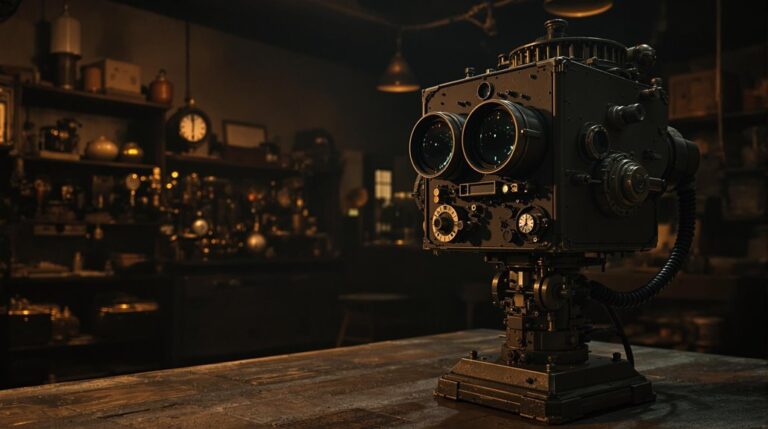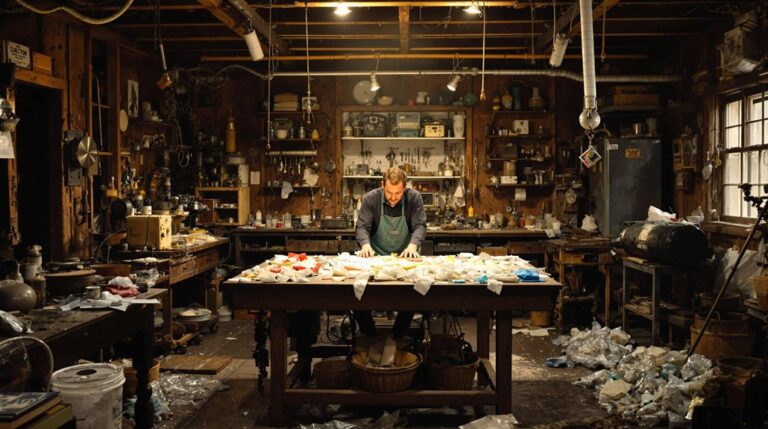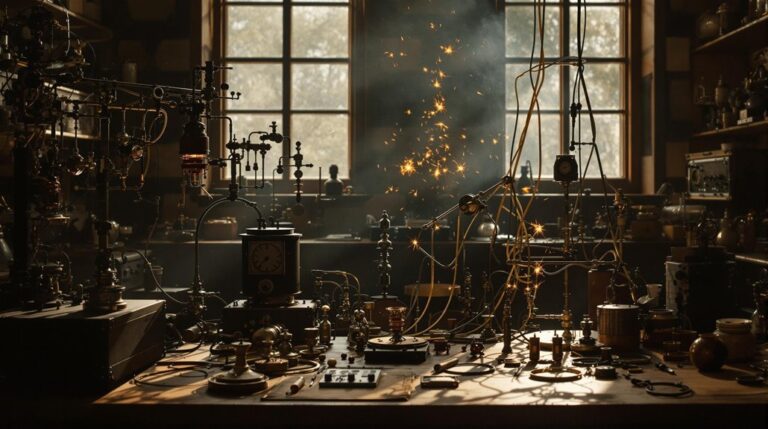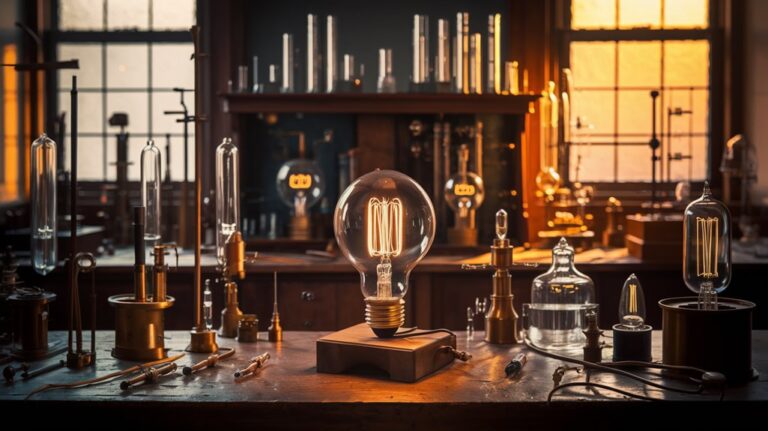Time Capsule to 8113: The Crypt of Civilization
You've probably wondered what people will know about our civilization thousands of years from now. In 1936, Dr. Thornwell Jacobs wondered the same thing, which led him to create history's most ambitious time capsule: the Crypt of Civilization. This sealed chamber, designed to remain untouched until 8113 CE, contains everything from microfilm and recordings to everyday items like a Budweiser beer bottle. What's even more fascinating is how they've engineered this vault to survive millennia of time.
The Vision Behind a 6,000-Year Time Vault
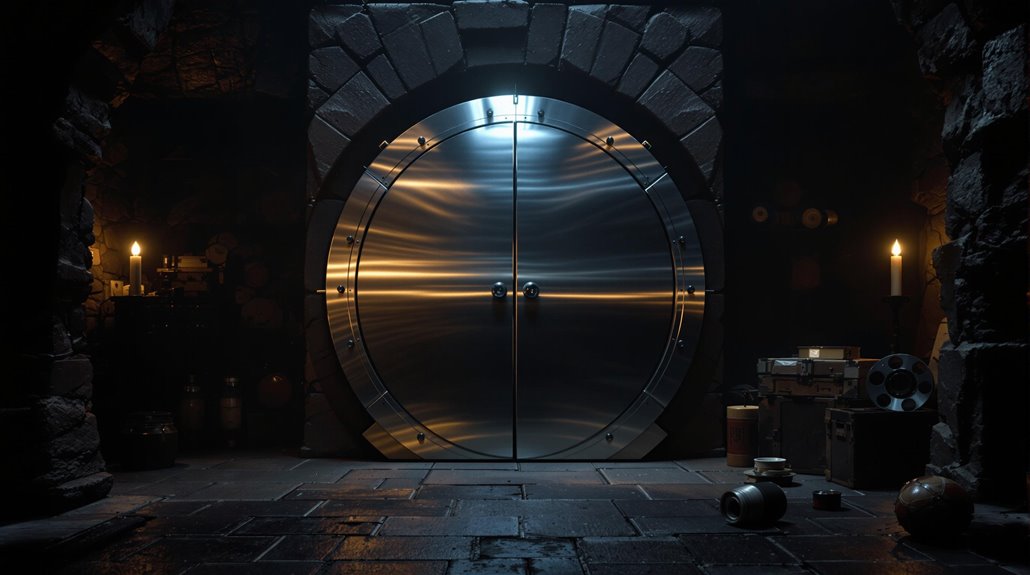
While ancient civilizations left behind magnificent monuments like the pyramids, they provided few detailed records of daily life and culture. This gap in historical knowledge inspired Dr. Thornwell Jacobs to create a thorough record of 1930s civilization for future generations.
You'll find that Jacobs' approach to cultural preservation was revolutionary for his time. He envisioned a project that would document every aspect of human knowledge and daily life, believing it was his generation's "archaeological duty" to leave detailed evidence of their existence. The project was first unveiled in the Scientific American magazine.
Rather than letting future civilizations piece together fragments of history, as we've done with ancient societies, Jacobs wanted to provide a complete snapshot of life in the 1930s. His vision marked the birth of the modern time capsule concept. Working with inventor Thomas Kimmwood Peters, he recorded over 640,000 pages of documents on microfilm to preserve humanity's collective knowledge.
Engineering an Eternal Chamber
After settling on his ambitious vision, Dr. Thornwell Jacobs transformed an abandoned swimming pool in Phoebe Hearst Hall's basement into an impenetrable time vault.
Inspired by the discovery of Tutankhamun's tomb, Jacobs envisioned a preservation project of similar historical magnitude.
You'll find this remarkable chamber built directly on bedrock, fortified with a two-foot stone floor and seven-foot thick roof.
The engineering materials were carefully selected for maximum durability. The walls feature porcelain enamel plates set in pitch, while stainless steel containers with glass linings protect the artifacts.
The Scientific American magazine first unveiled the ambitious project to the public in November 1936.
The chamber design prioritizes preservation through multiple safeguards: an airtight seal, inert nitrogen gas replacing oxygen, and a welded stainless steel door.
You'll notice how the technical features include innovative solutions like a small windmill for power generation and a Language Integrator to assist future discoverers.
Climate control measures and backup systems guarantee the contents remain accessible for millennia.
A Snapshot of the 1930s World
The 1930s represented one of humanity's most turbulent decades, captured within the time capsule's carefully curated contents.
You'd find evidence of the Great Depression's devastating impact, with unemployment reaching 25% in America and poverty spreading worldwide. In the American heartland, the Dust Bowl wreaked additional havoc on struggling farmers. While democracies struggled, totalitarian regimes rose to power – Hitler in Germany, Mussolini in Italy, and Stalin's iron grip on the Soviet Union tightened through his Great Purge. The decade's political upheaval culminated when Nazi forces invaded Poland in 1939.
Yet amid these dark times, you'd discover remarkable scientific advancements: Chadwick's neutron discovery, Ruska's electron microscope, and Whittle's jet engine patent.
Cultural shifts brought entertainment to the masses through radio's golden age, Hollywood's classic films, and the rise of jazz music.
These artifacts paint a complex picture of humanity facing unprecedented challenges while achieving remarkable progress.
Preserving Knowledge Through the Ages
Since knowledge forms the bedrock of human progress, preserving it for future generations has become one of civilization's most vital endeavors.
Through digital preservation and traditional methods, we're safeguarding humanity's collective wisdom against time's relentless march. Future generations' learning depends heavily on the knowledge we preserve today. Cultural continuity depends on our ability to protect and transmit information effectively. Scientific advancement requires proper archiving of both publications and datasets.
You'll find various preservation techniques being used today:
- Journals and books capturing written knowledge
- Oral histories maintaining cultural traditions
- Climate-controlled archives protecting physical artifacts
- Digital storage systems backing up electronic data
- Time capsules preserving snapshots of specific eras
While we face challenges like digital obsolescence and physical degradation, modern preservation methods help guarantee that future generations won't lose access to our accumulated knowledge.
From ancient scrolls to modern hard drives, each preservation method plays a vital role in maintaining our intellectual heritage.
Teaching English to Future Generations
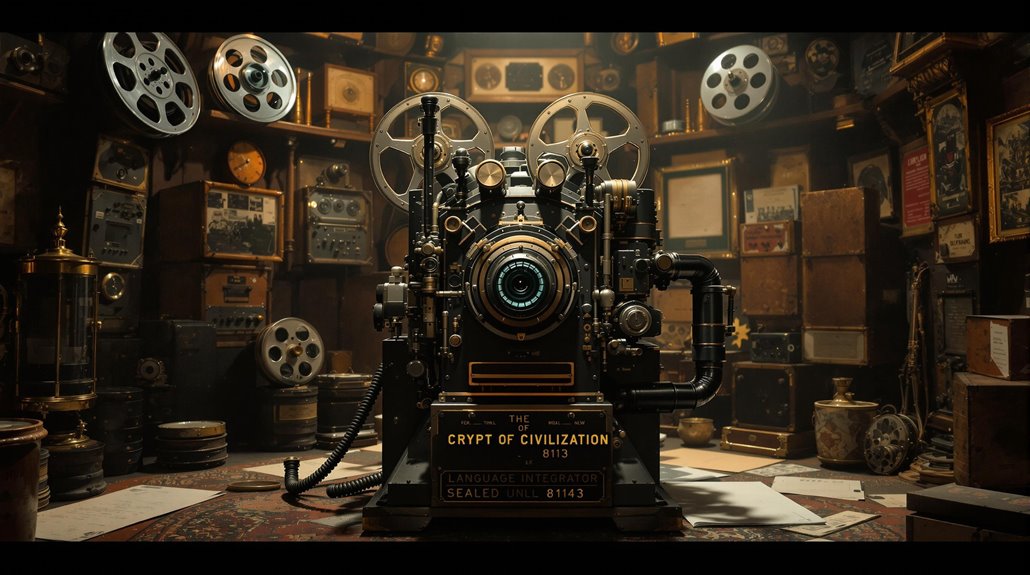
Among preservation efforts, teaching English to future generations poses unique challenges for the time capsule project.
You'll find the innovative Language Integrator Device, a modified Mutoscope that combines visual filmstrips with audio pronunciations, serving as primitive educational technology to bridge the millennia. The device emphasizes situational language teaching to ensure practical communication skills survive through time. Teachers can use this device to create an immersive experience without requiring translations.
Considering potential language evolution over thousands of years, the project employs multiple strategies to guarantee comprehension.
You'll discover a layered approach that includes visual aids, universal symbols, and Rosetta Stone-like translation tools. The device provides basic English instruction through common phrases and objects, while stored microfilm copies of literature and religious texts offer deeper linguistic context.
To combat potential obsolescence, you'll see redundant preservation methods including audio recordings of languages and written instructions in multiple languages, maximizing the chances of successful communication across time.
The Legacy and Impact of Modern History's First Time Capsule
Deep within Oglethorpe University's granite walls, modern history's first deliberate time capsule awaits its scheduled opening in 8113 AD.
Thornwell Jacobs' groundbreaking project revolutionized cultural preservation and future communication, inspiring countless similar endeavors worldwide. Located in Phoebe Hearst Hall, the crypt stands as a testament to archaeological foresight.
 640,000 microfilmed pages of humanity's greatest literature and achievements.
640,000 microfilmed pages of humanity's greatest literature and achievements.
You'll find its impact reflected in these enduring legacies:
- Sparked the creation of the famous Westinghouse Time Capsule, which coined the term we use today
- Established foundational techniques for long-term preservation methods
- Led to the formation of the International Time Capsule Society in 1990
- Influenced global discussions about language evolution and technological obsolescence
- Set the gold standard for documenting contemporary civilization
The Crypt of Civilization's ambitious 6,177-year preservation timeline has earned it recognition in the Guinness Book of World Records and continues to captivate media attention decades after its sealing.

